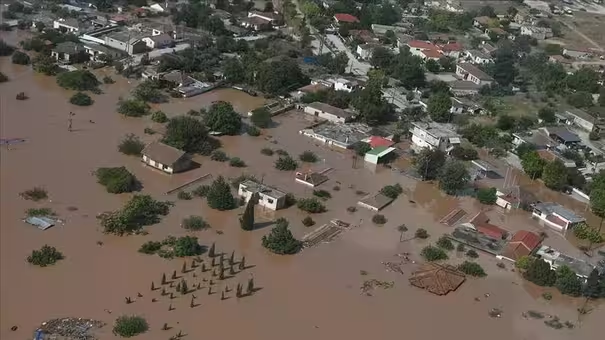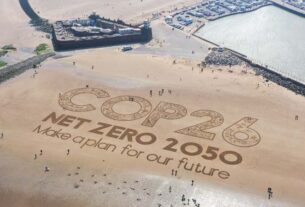Climate change, an issue once dismissed by skeptics, is now visibly reshaping the world we live in, with devastating impacts on human life, ecosystems, and economies. From extreme heat waves to intensified storms, the effects of climate change are driving a steep increase in severe weather events. This intensification of natural hazards has already resulted in the tragic loss of over 570,000 lives in recent decades. These deaths, although preventable, are a stark reminder of the urgent need to address climate change at a global scale.
The startling death toll highlights the grim reality that the effects of climate change are no longer just a distant threat but a present danger affecting millions worldwide. Understanding the link between climate change and intensified weather events—and its direct consequences on human health, infrastructure, and economies—can pave the way for more effective climate action and adaptation strategies.
The Climate Crisis and Escalating Weather Events
Climate change intensifies the frequency and severity of many types of extreme weather. Studies from agencies like the Intergovernmental Panel on Climate Change (IPCC) show that greenhouse gas emissions, primarily carbon dioxide from burning fossil fuels, trap heat in the Earth’s atmosphere, causing temperatures to rise. This warming impacts ecosystems, weather patterns, and ocean currents, creating more intense and unpredictable weather.
The most common climate-related events include extreme heat, wildfires, hurricanes, typhoons, flooding, and droughts. These events have drastically increased in both frequency and severity, leading to more widespread destruction and loss of life. For instance:
- Extreme Heat: Record-breaking temperatures have become a regular occurrence, claiming thousands of lives globally. Heatwaves have now become hotter, more prolonged, and increasingly common, disproportionately affecting vulnerable populations such as the elderly and those without access to air conditioning.
- Wildfires: Rising temperatures and prolonged dry spells have triggered massive wildfires across regions like California, Australia, and the Amazon rainforest. These fires are not only deadly but also contribute to greenhouse gas emissions, creating a vicious cycle.
- Hurricanes and Typhoons: Ocean temperatures continue to rise, fueling the intensity of storms. These “supercharged” hurricanes cause devastating flooding, strong winds, and storm surges that displace thousands of people and cause widespread destruction.
These intensifying events reflect the “feedback loop” of climate change. As emissions increase, global temperatures rise, leading to more severe weather events, which in turn release even more carbon emissions into the atmosphere.
Breaking Down the Devastating Death Toll
A report by Germanwatch highlights that over 570,000 people have lost their lives in climate-related events in the last 20 years, with millions more injured or displaced. The death toll stems from both the direct impacts of extreme weather and indirect consequences like disease outbreaks, malnutrition, and air quality deterioration. Some of the key contributors to the rising death toll include:
- Extreme Heat: Heatwaves have become the deadliest form of weather-related disasters. They disproportionately affect the elderly, young children, and people with preexisting health conditions. In Europe’s 2003 heatwave alone, over 70,000 lives were lost due to heat stress and heatstroke.
- Flooding and Storms: Flooding has affected more people than any other climate-related event, especially in low-lying areas and coastal regions. The combination of sea-level rise and more intense storms has made coastal flooding more frequent and severe. In countries like Bangladesh, where communities live close to sea level, flooding claims hundreds of lives each year.
- Wildfires: Massive wildfires have led to the death of thousands, along with causing respiratory problems for millions more. In Australia’s 2019–2020 bushfires, known as the “Black Summer,” more than 30 people died, while smoke-related health issues affected over 400 people, and millions of animals perished.
- Droughts and Food Insecurity: Droughts have intensified across many regions, particularly in Africa and the Middle East, leading to crop failures, water shortages, and food insecurity. Hunger, malnutrition, and associated health issues have claimed countless lives and continue to threaten communities, especially in regions heavily reliant on agriculture.
Socioeconomic Impacts and Climate Vulnerability
The impacts of climate change aren’t evenly distributed; certain populations face greater risks and consequences than others. Socioeconomic disparities exacerbate these impacts, with poorer communities often suffering the most. Here’s how climate vulnerability plays out:
- Low-Income Nations: Countries with limited resources are disproportionately affected by climate-related disasters. They often lack the infrastructure, healthcare, and resources to cope with extreme events, resulting in higher mortality rates. In sub-Saharan Africa, for example, prolonged droughts lead to food and water shortages, putting entire communities at risk.
- Urban Populations: Densely populated urban areas are vulnerable to heatwaves and air pollution, both exacerbated by climate change. Cities also experience the “urban heat island” effect, where temperatures rise due to human activities and infrastructure, adding to the risk of heat-related deaths.
- Indigenous Communities: Indigenous communities are particularly vulnerable to climate change due to their close ties to the environment. Rising sea levels, drought, and loss of biodiversity directly affect their traditional ways of life and food sources.
This uneven distribution of risk highlights the need for climate policies that account for vulnerable populations, as climate change continues to widen social and economic inequalities.
Economic Costs of Climate-Related Deaths and Displacement
The economic repercussions of climate change are staggering, with millions of dollars lost annually in damages, healthcare costs, and rebuilding efforts. Beyond the immediate costs of extreme weather, the economic toll extends to lost productivity, healthcare expenditures, and the long-term costs of supporting displaced communities.
The escalating costs place additional strain on already vulnerable economies. Developing nations often rely on agriculture and natural resources, making them especially susceptible to the impacts of climate-related disruptions. According to a study by the World Bank, climate change could force 143 million people to migrate within their countries by 2050, adding to the economic burden. This migration, driven by factors such as water scarcity and crop failures, further strains limited resources and creates social tensions.
Adaptation and Mitigation Efforts: A Global Imperative
Addressing the impacts of climate change on human life requires both adaptation and mitigation. Here’s how countries and organizations worldwide are working toward a more climate-resilient future:
- Emission Reduction Targets: The Paris Agreement is a landmark accord that aims to keep global warming below 1.5 degrees Celsius compared to pre-industrial levels. Achieving these targets requires reducing greenhouse gas emissions, shifting to renewable energy, and promoting sustainable practices across industries.
- Climate-Resilient Infrastructure: Investments in resilient infrastructure, such as flood defenses, green roofs, and cooling centers, help reduce the direct impact of extreme weather events. For instance, heatwave-prone cities like Phoenix, Arizona, have implemented cooling centers to protect residents from extreme temperatures.
- Early Warning Systems: Advanced technology, such as satellite monitoring and AI, enables better prediction and response to climate-related disasters. Early warning systems have proven to save lives by allowing timely evacuations and preventive measures.
- Climate Financing for Developing Nations: The UN and other organizations provide financial assistance to help developing countries build resilience to climate change. Programs focusing on sustainable agriculture, clean water access, and emergency preparedness aim to mitigate the effects of climate disasters.
- Community-Based Adaptation: Community-led efforts can improve resilience at the local level. This includes promoting sustainable agricultural practices, protecting local ecosystems, and developing education programs to raise awareness of climate risks.
A Call for Greater Urgency in Tackling Climate Change
The ongoing human cost of climate change underscores the urgent need for immediate and sustained action. International efforts must be strengthened to reduce emissions and invest in adaptive measures that protect human lives and ecosystems. In recent years, younger generations have shown unprecedented awareness and activism around climate issues, demanding change from corporations and governments alike.
While the numbers can be overwhelming—over 570,000 lives lost to climate change-intensified weather events—each statistic represents a family, a community, and a loss that could have been avoided. This death toll serves as a grim testament to the real-world effects of climate change, pushing for action that goes beyond promises and targets and moves toward tangible solutions.
With a growing body of evidence connecting climate change to human health, economic loss, and societal disruption, the message is clear: protecting the planet is essential not just for the environment but for the well-being and survival of future generations. The journey toward a more sustainable world involves all sectors of society, from policymakers to individual citizens, working together to address the challenges posed by climate change.
Through focused action, innovation, and commitment to reducing emissions and increasing resilience, we can aim to mitigate the devastating toll that climate change is already taking on our world. The path forward is challenging, but it’s also filled with opportunity for creating a safer, more equitable world for all.





